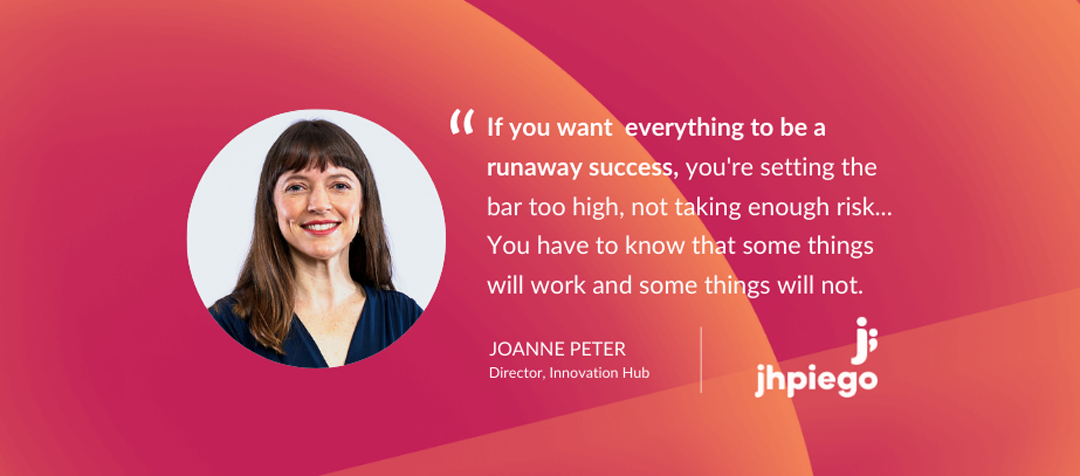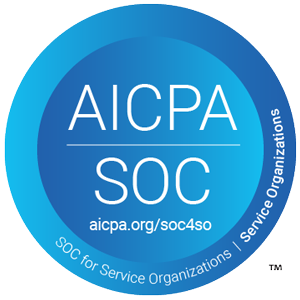Innovation Hub director Joanne Peter has been instrumental in helping foster creative healthcare solutions across the continent
Disclaimer: The opinions represented here are those of the individual and do not necessarily represent those of their current or former employer.
When it comes to innovation, especially in mission-critical industries like healthcare, the journey from idea to impact is anything but straightforward. For Joanne Peter, Innovation Hub Director at Jhpiego, it’s a journey she’s charted across medicine, development, and technology. Based in Cape Town, South Africa, Peter leads a robust innovation practice for a global health nonprofit affiliated with Johns Hopkins University, with a presence in 33 countries.
Her approach is a blueprint for sustainable, stakeholder-centered innovation in real-world conditions. BrightIdea sat down with Joanne to discuss innovation in healthcare, and how AI can help maximize the impact of limited resources.
Watch the full interview below, or read on for a selection of key takeaways.
Key takeaways:
- Clearly define the problem before hosting a hackathon. Focused challenges with specific needs and desired outcomes lead to stronger, more implementable solutions.
- Consider the full value chain from development to point-of-care use before launching innovations. Healthcare innovators can be challenged by policy or regulatory blindspots, or unexpected resistance from health workers.
- Scale external and internal innovation pipelines. Investing in both internal and external innovation efforts improves your odds of success.
- Give teams a stake in idea implementation. Ensuring team members understand how to follow-through with ideas is a key driver of success.
- Integrate small successes from larger failures. Failure is essential to the innovation process, and always succeeding means you’re taking too few risks.
Unlock Better Results with Focused Hackathons
While hackathons can generate a flurry of energy and creativity, their impact often hinges on one critical factor: clarity. As Joanne Peter emphasized, the most successful innovation efforts begin by precisely identifying the need at hand. Hackathons can become engines of rapid innovation with lasting impact when the problem is sharply defined and grounded in real-world urgency.
“Hackathons are most effective when there’s a very specific need and a clear solution to build toward. When the parameters are tight and the stakes are real, teams focus faster, collaborate better, and deliver stronger outcomes.”
For organizations looking to replicate that success, Brightidea’s Hackathon 5 Solution offers the tools to do just that. By helping teams establish problem clarity upfront, align stakeholders, and define execution plans during the event instead of after, Brightidea ensures that hackathons are more than idea factories. They become launchpads for solutions that are relevant, fundable, and implementation-ready.
Learn how BrightIdea’s Hackathon Solution turns inspiration into action with stakeholder alignment, execution planning, and structured follow-through.
Design for the Real World, Not Just the Drawing Board
It’s impossible to implement effective solutions without understanding all the factors that go into successfully introducing and scaling a new innovation within a health system. For Peter, the answer is to carefully consider the full value chain from early development of the innovation, through to manufacturing, distribution, delivery, and point-of-care use.
“Often we place so much emphasis on the design and development of the innovation itself, that we don’t pay enough attention to other factors like the policy and regulatory environment, distribution and delivery channels, training health workers, or building demand amongst end-users.”
One case in point was Jhpiego’s attempt to launch an e-pharmacy model for HIV prophylaxis in Kenya. The innovation seemed promising until policy roadblocks emerged. Regulations required HIV tests to be administered by health workers, which contradicted the pharmacy’s goal of decentralizing care out of health facilities. Rather than abandoning the project, Jhpiego worked with policymakers to update the regulations to allow HIV self-testing, unlocking the path for broader implementation.
For those operating across international or regulated markets, this story serves as a reminder: Without considering the policy and user ecosystem, even great ideas can fail fast.
Increase Impact By Improving Follow-Through
Hackathons generate energy and enthusiasm, but Peter notes they work best when paired with clear goals and follow-through. A motivated team is one thing, but great leaders ensure their team members are mission-driven and understand the implementation process once an idea is concrete.
“Your impact is a function of your idea and your implementation… Often the ideas are coming from all of these excited individuals, but they don’t have any stake in the implementation of that idea afterward.”
According to data from our recent hackathon survey, only 31.8% of employees who have participated in a hackathon have ever seen ideas successfully implemented into their company’s roadmap. For organizations looking to innovate in their space, the solution is to create roadmaps that bring ideas fully to fruition. That’s something that can and should be done during Hackathon sprints, organizations simply need to dedicate sprint time to building in-depth implementation plans.
Jhpiego’s success is directly tied to real-world problems, backed by resources, and driven by teams who have a stake in the outcome. These projects are major investments with cross-functional leadership, strategic alignment, and concrete deliverables. By copying Jhpiego’s homework, organizations can get better outcomes on their own initiatives.
Implement Internal and External Innovation Programs
Jhpiego’s innovation portfolio includes three key initiatives: Catalyst Fund (internal R&D), Jhpiego STARS (an employee recognition program), and Jhpiego WISH (a startup accelerator working with external innovators). This trio ensures a pipeline of ideas from all directions; top-down, bottom-up, and outside-in.
“The Catalyst Fund is our internal R&D fund… Jhpiego STARS is an appreciation/ acknowledgement program to recognize innovation that has emerged organically from within the organization… Jhpiego WISH… works with external innovators… So across that spectrum, we’re placing an emphasis on internal innovation and keeping a finger on the pulse of external innovation.”
This diversified model allows Jhpiego to foster a culture of innovation internally while tapping into grassroots ingenuity externally. A key strength of this multi-pronged approach is that it reduces reliance on a single innovation stream. It also helps uncover more context-aware, locally relevant solutions, which are particularly valuable for global companies or public sector agencies working across regions.
A strong example of this dual approach is General Electric (GE). GE has cultivated innovation internally through programs like GE FastWorks, which empowers employees to develop and test ideas using Lean Startup principles. At the same time, GE actively engages external innovators through Open Innovation Challenges, collaborating with startups, researchers, and entrepreneurs to solve complex engineering and technology problems.
Focus on Learning Rather Than Success
Not every idea needs to become a blockbuster. Peter believes that a healthy innovation practice should expect and embrace some level of failure. The focus should be on learning, not just implementation. A culture that pushes for every experiment to be a success is misguided, according to Peter.
“If you want everything to be a runaway success, you’re setting the bar too high, not taking enough risk. As an innovation practice, you have to know that some things are going to work and some things are not going to work. And the main thing is that you learn from why it didn’t work… If you can do something differently next time, it’s not a failure. It’s part of running an innovation practice.”
This philosophy allows Jhpiego to extract value even from short-lived pilots. A failed concept might still produce a research publication, new partnerships, or funding leads.
When scrapping an idea, be sure to perform an in-depth analysis to determine what did work. By integrating minor workflow improvements identified while innovating, organizations can get 1% better each day. That compounding success can lead to new heights.
Delight Patients With Consumer-Focused HealthTech
Peter closed with a bold vision of what healthcare could be if we brought the same human-centered innovation we expect in consumer technology.
“You should be able to experience healthcare in a way that surprises and delights you… with technology that anticipates your needs and meets you right where you are in your own home.”
Joanne Peter’s work offers a compelling case for the kind of innovation that changes lives. She advocates for deep stakeholder engagement, consistent learning, and creating ecosystems that make implementation inevitable.
Whether you’re tackling a health equity challenge, building a smart city, or launching the next internal accelerator, her lessons apply: Structure your process. Build your relationships. Measure what matters. And never stop adapting.
Platforms like BrightIdea exist to make that possible by helping teams move from scattered ideas to systemic transformation. Request a demo today to learn more.


